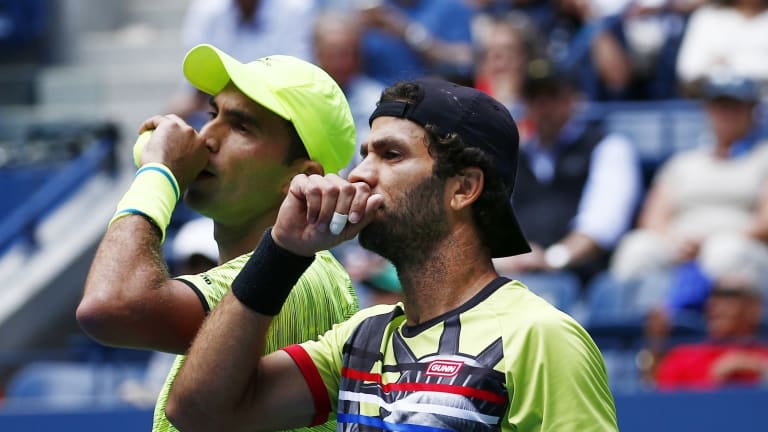NEW YORK— Sometimes it’s the spur of the moment questions that elicit the most lasting answers.
As the men’s doubles’ trophy ceremony wound down on Friday, Tom Rinaldi of ESPN seemed to be finished with his interview with one of the winners, Jean-Julien Rojer of the Netherlands. But Rinaldi, glancing at Rojer’s outfit, had to ask: Why was he wearing a shirt with the Statue of Liberty plastered across the front?
“Quickly, for you, Jules, your choice of wardrobe today, seemed to make a statement in this particular place,” Rinaldi said with a smile. He probably expected to receive an answer that was more comical than eloquent. But eloquence was what he got.
“A friend of mine owns a clothing company and makes these clothes for me to play in,” Rojer said. “I have Lady Liberty on the front, and on my jackets I have a peace symbol on the back. The idea came after the tragic incident in Charlottesville, and we came up with this line promoting peace and freedom and liberty.”
Rojer is a 36-year-old native of Curaçao who has won 25 doubles titles, including three Grand Slams. He says he’ll forever be grateful to the U.S. for allowing him to come to this country to train with his coach when he was 12. He went on to play at UCLA, where he was inspired by the legacy of social activism of its most famous tennis-playing graduate, Arthur Ashe.
“I think Arthur Ashe is awesome,” Roger said on Friday, expanding on his words after the final. “Once you’re in UCLA, you hear his name all the time, an unbelievable person and the stuff that he did not only for tennis players, but, you know, in general.”
Long before college, Rojer had seen and felt a difference between the U.S. and Curaçao when it came to race relations.
“First time I noticed color was when I came to the U.S., sad to say that, when I was 12, because we don’t grow up with that back home,” Rojer said. “In the Caribbean, we see a black father, as well, and a white mother.”
Rojer says he watches the news in the States, and “sees a lot of unfair stuff going on,” but doesn’t typically get too involved. That changed after the clashes in Charlottesville.
“I thought it was a good message,” Rojer said of the symbols on his shirts and jackets. “And quite honestly, I liked the clothes and the stuff so I went that route. I mean, you can never say too much stuff for equality and everybody in this country. I think that message needs to be passed on constantly.”
“It’s funny, in the beginning, I wasn’t getting questions,” about his clothes, Roger said. “Once we made the semifinals, finals, you get a little bit more attention and more press.”
